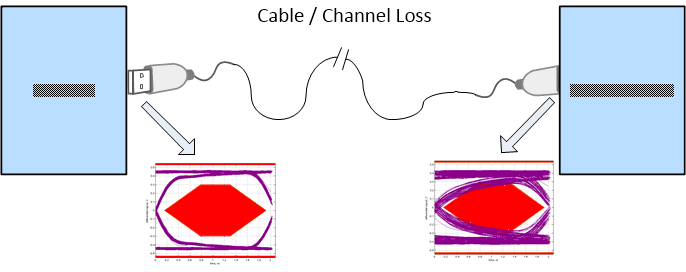SLLA454A April 2019 – August 2024 TUSB211A , TUSB212 , TUSB213 , TUSB214 , TUSB215 , TUSB216 , TUSB217A
- 1
- Abstract
- Trademarks
- 1 Introduction
- 2 USB 2.0 Signal Integrity Challenges
- 3 Choosing to Use a USB 2.0 Redriver
- 4 Redrivers in Automotive
- 5 Redrivers in Enterprise
- 6 Redrivers in Medical
- 7 Re-drivers in Personal Electronics
- 8 Re-drivers in other applications
- 9 Facilitating Easy Use of TUSB211A Using the TUSB211PICO-EVM
- 10Summary
- 11References
- 12Revision History
1 Introduction
Since the inception in 1996, Universal Serial Bus (USB) has become one of the most successful wired interfaces adopted by a wide range of electronics devices and equipment across industries, such as personal electronics, automotive, industrial, and enterprise systems. Even though USB data rates have evolved to support higher bandwidths over the years, currently achieving 10Gbps per lane, it has kept the backwards compatibility of the USB 2.0 specification with up to 480Mbps data rate for many low bandwidth applications. Even at the lower USB high speed data rate of 480Mbps, USB signals are subject to signal degradation over cables, trace loss, and passive components in the data path, which can result in USB 2.0 compliance failures. Figure 1-1 shows an example.
 Figure 1-1 Signal Integrity Degradation
Figure 1-1 Signal Integrity DegradationTo help mitigate the signal degradation that comes with these factors, a USB 2.0 redriver can be used to help boost the signal as it travels from the USB host to the USB device. This USB 2.0 redriver monitors the signals that travel underneath it, and upon detecting a High-Speed (HS) signal, begins boosting the signal of the device. This boost targets two areas of the redriver, the DC Levels, VHigh and VLow, which tend to decrease over longer cable and travel lengths, and the AC aspects of the rising and falling edge, which can tend to slow down at longer lengths, leading to less margin around the mask of an eye diagram, which is typically used to help determine the integrity of a USB 2.0 Signal.
 Figure 1-2 Redriver Eye Diagram
Comparison
Figure 1-2 Redriver Eye Diagram
Comparison